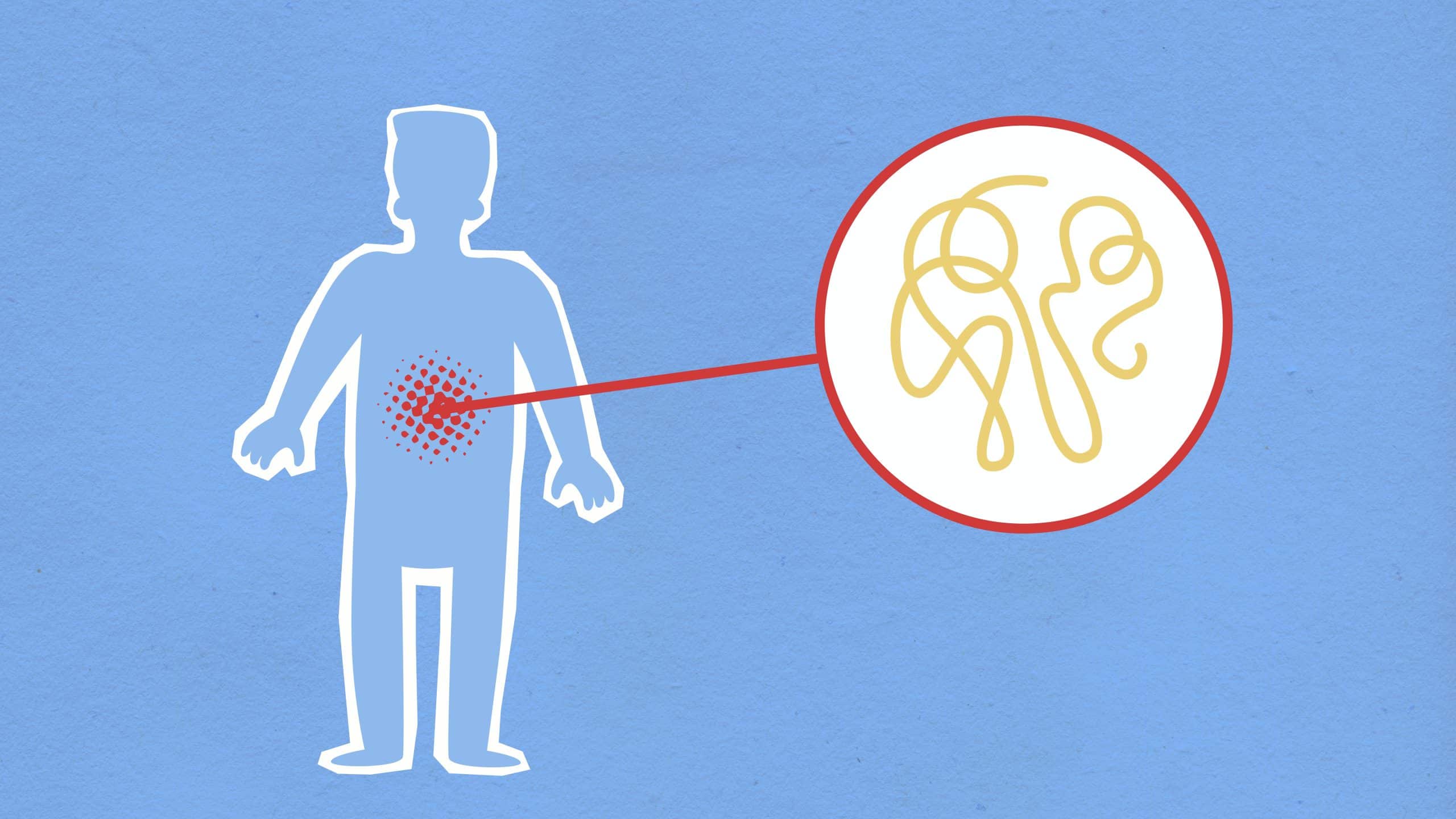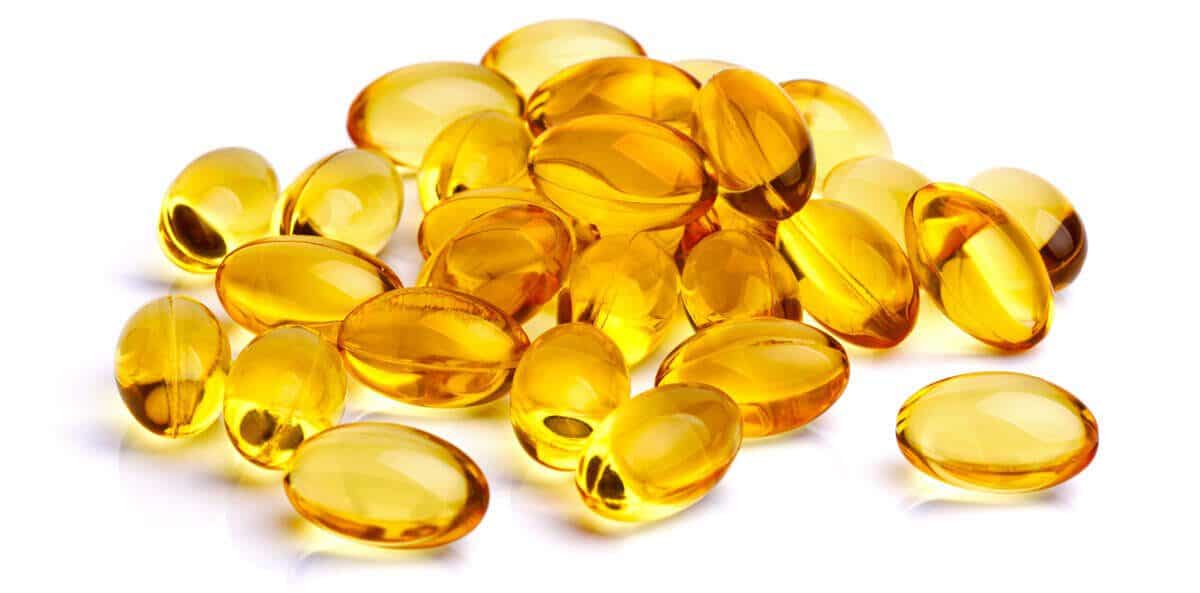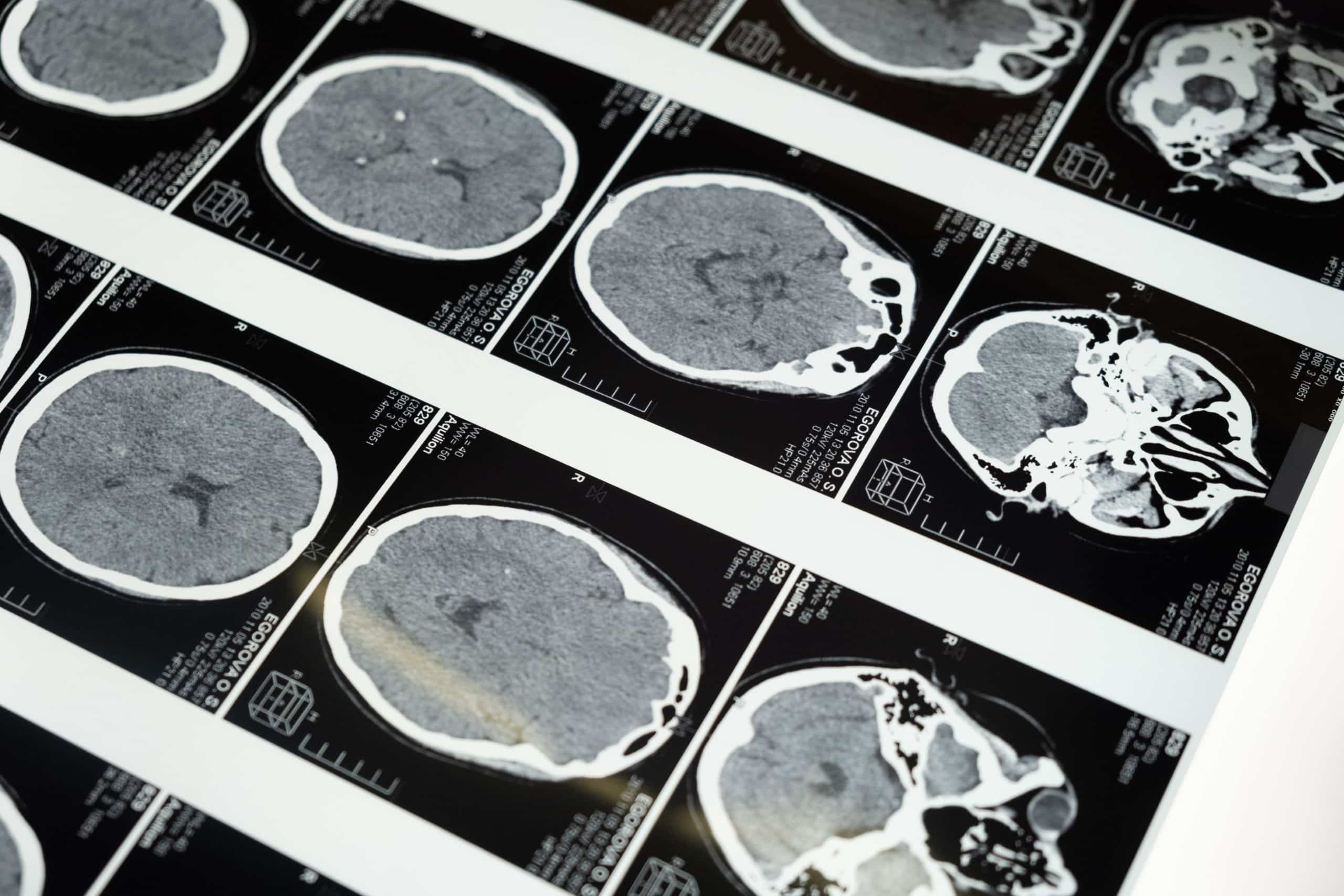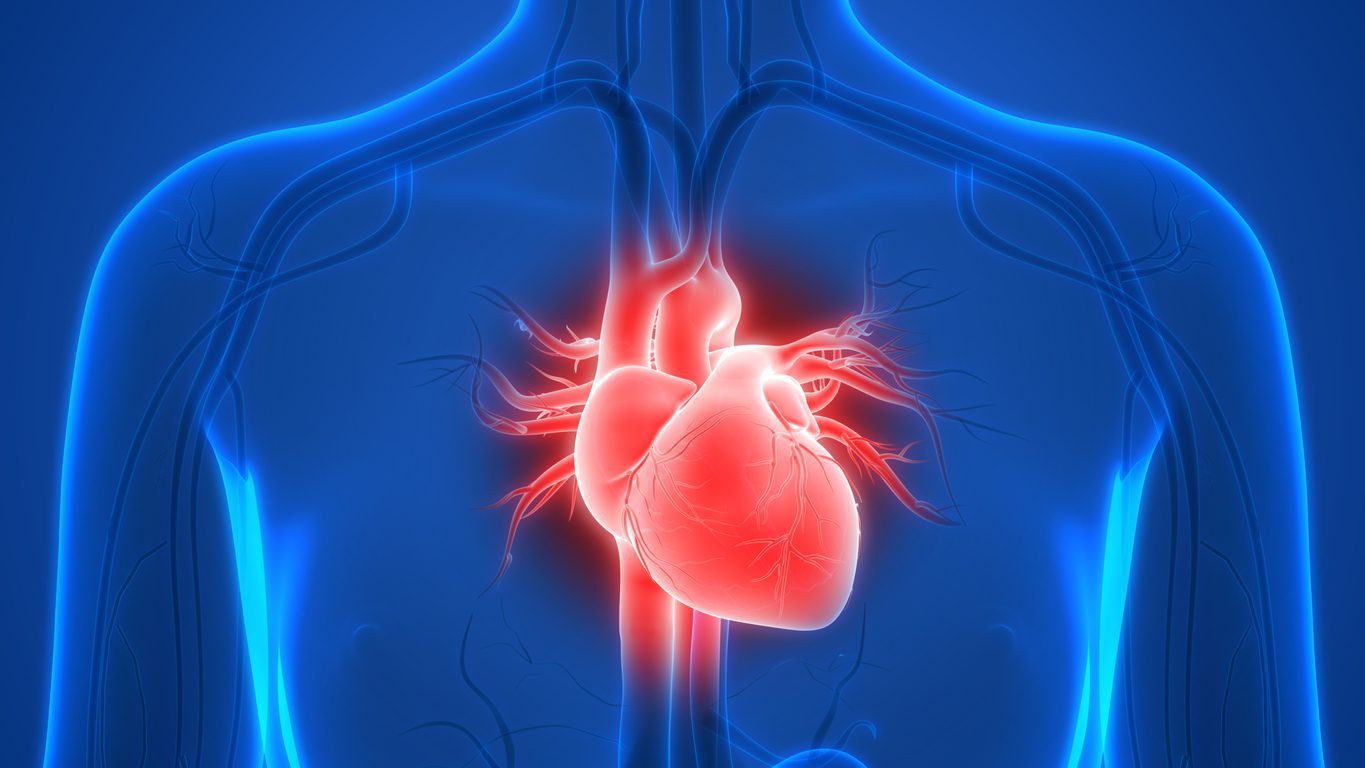Your cart is currently empty!
Blog
-

Don’t Let Loneliness Kill You
Strong relationships are crucial to living a happy and healthy life. But loneliness and social isolation are growing problems that have grim emotional, mental and physical consequences.
Nearly one-third of Americans over the age of 65 now lives alone, and half of those over 85 live on their own; and 40 percent of adults now say they are lonely, which is up from 20 percent in the 1980s. Research continues to show that loneliness and social isolation can influence sleep quality, overall health and impaired cognitive performance, and has been linked to an increased risk of developing Alzheimer’s disease, depressive symptoms and mortality. Moreover, isolation reduces immune function and contributes to inflammation, which can lead to type 2 diabetes, arthritis and heart disease.
Individuals in poor health–especially those with disorders like anxiety–are more likely to withdraw from friends or family and are more likely to feel lonely.
When someone becomes ill a debilitating sequence of events can occur; a decline in energy accompanies the illness. This fatigue affects mobility and motivation to leave the house. Eventually, this can lead to total social isolation and eventually diminished self-worth and purpose.
Overcoming Isolation
Maintaining a rich and rewarding social life as you age is possible. Technology and social media is both a blessing and curse when it comes to forging new friendships and staying connected. It can help you keep in touch with family and friends that live far away, but it cannot replace face-to-face interactions and “old fashioned” friendships.
When faced with feelings of loneliness, it is important to acknowledge your feelings and realize that you are not really alone—everyone deserves friendship and love. When making new connections, it can feel awkward and uncomfortable at first but the more you get out there, the easier it becomes.

The best way to find a community that will provide support, friendship and help you fulfill your purpose is to follow your interests and hobbies. Whether it’s golfing, dancing, reading, arts and crafts, chess or maybe you want to learn something new, there is a group waiting to welcome you! Great places to meet new people and find local clubs include your church or place of worship and community recreation centers. Most offer events and classes for a wide range of interests, ages and skill levels.
Maintaining healthy relationships throughout your life keeps you strong, as well. All humans have an inherent desire for closeness, and it is an essential part of our development. Next time you have the opportunity to go out with a friend, attend an event in your neighborhood or even strike up a conversation with a stranger, take it! Your body and mind will thank you for it.
-

Keeping the Quality of Life Robber at Bay
If you have ever had something of value stolen from you, the emotions and feelings of loss are life-changing.
I remember a few years ago when my wife and I took a vacation and checked into a well-known, nice quality hotel. We were there to celebrate life! I had just recently given my wife a new wedding ring with the stones from the first ring I gave her (pretty small) now surrounding a beautiful multiple carat stone. It held a lot of sentimental value from our wedding vows; for better or worse, for rich or poor. The ring also represented that life had been good to us and we had prospered in our life journey together.
During one of the days at the hotel, the maid service came earlier than anticipated and Susan was still doing her makeup and preparing for the day. She had forgotten she had placed the ring beside the bed. The short version of this saga, when she went to put on the ring, it was gone. The feelings of loss and violation were surprisingly overwhelming. A thief had taken something of great sentimental value.
The point I would like to make is each of us has qualities and experiences which are of great value. They contribute to the meaning, purpose and fulfillment of our lives. Without our consistent awareness, they can be easily stolen by a thief. Please stay with me, as this may even save your life.
Many of our TriVita members are in the 50-plus years of age range. At this age, you’re in the prime of your life, but beyond 50, how well you feel is determined by your physical, emotional and spiritual wellness! There is one robber, the thief of quality of life, and it is the thief known as illness. When long lasting illness is present, it robs us of quality of life. It may be caused by disease but it may not. It may be merely the feeling of fatigue of body, mind or spirit. It might be digestive issues, stress, or pain but the thief is present, and the feelings and emotions are real when the quality of life is diminished. Many people push on; living this way till the thief actually robs their life which results in premature death.
Our wellness is like the precious ring I had given to my wife with memories attached of the experiences we had enjoyed together. When the ring was on the hand, it was adored and appreciated, but when lost, its significance was more impacting than ever imagined.

Promoting and protecting your wellness is one the most important things you can do.
There are key indicators from a clinical view that indicate your present and future state of health. Here are key numbers to know and manage, especially if you are 50 years of age or older.
- Check your blood pressure and pulse. Untreated chronic high blood pressure is an equal opportunity killer! It can kill your heart, brain, eyes, kidneys and other organs. There was a close friend of mine that would not deal with his blood pressure and died at 62 years of age. Robbed of quality of life!
- It is crucial for your health to know your blood sugar. Untreated, it leads to diabetes (elevated blood sugar) which will long-term rob you of your health and wellness. I know medicine promotes managing it, but if pre-diabetic or type 2; you can reverse it with lifestyle choices and chase the thief out of your life! Why is this important, because diabetes leads to other issues like heart disease, kidney failure, blindness, amputations, dementia and Alzheimer’s. All robbers of quality of life!
- Your BMI or body mass index is also a good indicator of your present and future health. As we age, our metabolism changes, and it is easy to begin to lose muscle, and it may be replaced with fat. The most serious fat gain that may not be noticed until way advanced is visceral fat in the stomach and around the organs. Elevated fat levels should be identified as a thief of your future quality of life! I am not promoting a diet here, but lifestyle choices of clean, whole foods and avoiding as much processed food as possible.
- Women, balance your hormones levels. As a woman over 50, you have experienced many hormonal changes. Three critical hormonal areas to focus now on your life including your sex hormone levels of estrogen and progesterone, your cortisol stress hormone levels and the third is your thyroid which is your master gland of metabolism. Add to this routine breast exams and mammograms. Early detection is protecting, and it can save your life! Find an excellent integrative physician and embrace balance and energy in your life. Even if you have to fly across the country, come to the TriVita Clinic of Integrative Medicine.
- Men, prostate health, can be protected and enhanced. If there is a thief in a man’s quality of life, it is poor prostate health. Early detection and protection are most desired, but also know that inflammation can lead to high PSA! Eat a low inflammatory diet with support from targeted nutrition with TriVita Prostate Formula along with Omega3 Prime to help support a healthy prostate! For sure, this is a lurking thief that men should identify and seek ways to promote a healthy prostate. Your annual physical is added protection against this thief.
Wellness is a beautiful thing. Out of wellness comes our vitality in supporting our life’s meaning, purpose and fulfillment. You have the power of choice. You have the power of healing within. You can experience, physical, emotional and spiritual wellness!
-

3 Ways to Detect and Prevent B-12 Deficiency
For most healthy adults Vitamin B-12 deficiency may be uncommon because the body can store B-12 to be used over time. However, if you suspect you may be at risk or are already deficient, keep reading to find out how to avoid and reverse this potentially devastating deficiency.
1. Understand How We Become Deficient
Understanding how you can become deficient is crucial to avoiding and reversing the deficiency. For some groups, a lack of Vitamin B-12 in their diet is the cause of low levels. These groups can include strict vegans and individuals with limited access to high-quality animal products, such as meats and dairy.
If you regularly consume good sources of B-12 but still have low levels, then inadequate absorption may be the culprit. Nutrient absorption begins with digestive enzymes and bacteria that break down your food. Most of these molecules will make their way to your small intestines where they will enter your bloodstream. However, this seemingly simple process can be complicated by the removal or malfunction of the organs involved. Individuals at risk for poor absorption may include those with certain digestive conditions such as [TVBLOGCOPY]Celiac[/TVBLOGCOPY][MWSBLOGCOPY]Celiac[/MWSBLOGCOPY] or Crohn’s disease.
2. Know Your Risks
Once you understand the difference between intake and absorption, it’s important to look at your lifestyle. If you eat a balanced diet but have poor digestion, you may consider having your gut checked or adding [TVBLOGCOPY]probiotics[/TVBLOGCOPY][MWSBLOGCOPY]probiotics[/MWSBLOGCOPY] to your routine. Certain probiotic microorganisms help enhance the absorption of vitamins and minerals.
The cause of your deficiency may be lurking in the medicine cabinet. It is well-documented that certain substances and medications can contribute to inadequate levels of B-12. Metformin, a common diabetes medication, antacids and even some antibiotics can inhibit nutrient absorption.

3. Check Your Levels
A [TVBLOGCOPY]Vitamin B-12[/TVBLOGCOPY][MWSBLOGCOPY]Vitamin B-12[/MWSBLOGCOPY] deficiency can only be diagnosed through a blood test. If you suspect you are deficient or at risk for developing a deficiency, talk to your doctor about checking your levels. Your doctor may also want to check you for other potential nutritional deficiencies based on your gender, age, lifestyle and medical history.
Are You Over 40? Learn about the [TVBLOGCOPY]5 key nutrients you may be missing[/TVBLOGCOPY][MWSBLOGCOPY]5 key nutrients you may be missing[/MWSBLOGCOPY].
References:
-

Member Spotlight: Delores Moore
Bad things sometimes happen to good people. But adversity doesn’t build character, it reveals it. For Delores Moore, she had her life turned upside down after a series of debilitating car accidents.

Delores Moore has been a TriVita Member since 2011, but her journey began long before then. Delores was in her first car accident in 1988 which resulted in serious injuries to her neck and spine. The fallout from that accident and subsequent legal battle consumed her life for the next five years and shook her vitality. “For a while I thought everything was going to be okay. I was doing everything I was supposed to do. I went to physical therapy, took supplements and medication only when I really needed it. I was still going to work because I love to teach, but it just got worse.”
At the time Delores was a high school teacher in New York. “I am a natural born teacher. I have a Bachelor of Education, a Master’s in Education and another Master’s in Education Administration. I taught general and special education; I was a jack of all trades. They put me wherever they needed me.” But after returning to work, her injuries worsened. “Every time I went to the doctor, he told me it would get worse, and it did. Finally, an MRI showed me what was going on,” Delores explained.
In 2005, Delores retired as a full-time educator and moved to New Jersey where she planned to work as a substitute teacher. “They gave me a beautiful retirement party, and it’s sad that these things happened. I would never have settled after that accident if I knew it was going to be like this.”
After moving to New Jersey, Delores was involved in two more accidents that compounded her previous injuries. “The two accidents affected my spine and legs. Then everything got worse, so I just called it in. This is a horrible nightmare but I am strong. I’m strong in my faith and what God can do. I’m just grateful that I can walk.”
For over 25 years Delores has been on a journey to recover with natural products. “My doctors always wanted to put me on these pills, but that’s a horrible life. I suffered all those years, and nothing seemed to help.”
During that time she tried different supplements and herbs, but early this year she found something that helped her. “I began taking MyoHealth after seeing the show with Dr. Wolfe. I began to feel better when a consultant told me about Nopalea. It turns out I had taken it years ago, but never stuck with it. So, I said I’d try it again in addition to the other TriVita products I was taking.”
“I take it every morning at 7 AM, and it really helps. I found my routine, and I want to let people know what I’ve gone through. I give testimonies to everyone! I’ve tried products from other companies, even some with Nopal cactus, but it’s not the same. People need to understand that they need to invest in themselves. Instead of buying things you don’t need, invest in a healthy body.”
While Delores doesn’t teach in schools any longer, she has remained active in her community. She attends church, helps the children with their homework and teaches life skills.
“Thank God for the churches. I’ll always do what I can to help others. I’ll never stop teaching. I love children, and if I can teach even once a week, I’m good. And the children need it; they need anyone that can give them any kind of time and attention. I enjoy them so much, and they enjoy me too. We have a lot of fun together!”
Delores will continue teaching within her church and hopes to find others that are interested in volunteering their time. “A lot of parents here want me to start a program, but I need some young people that can help me. I have the knowledge, but I need the help. If it’s God’s will, it will happen.”
-

Inflammation Quiz — Is Your Lifestyle Hurting Your Health?
Acute inflammation is an essential part of the body’s healing process. Inflammation occurs at the cellular level when the immune system tries to fight off disease-causing germs or debris from an injury and repair damaged tissue. Once the fight is over the inflammation-triggering substances are supposed to retreat. However, when they don’t, it destroys the balance within your body and can make you more susceptible to premature aging and disease. Answer “yes” or “no” to the questions below to find out if any of your everyday lifestyle habits are contributing to chronic, unmanaged inflammation.
Answer “yes” or “no” to the questions below to find out if any of your everyday lifestyle habits are contributing to chronic, unmanaged inflammation.- Do you regularly eat processed foods, refined sugars or refined grains?
- On a typical day do you eat white bread, pastries, French fries, margarine, soda or other sugar-sweetened drinks?
- Do your meals rarely consist of whole, unprocessed fruits, and vegetables?
- Do you get less than 8 hours of uninterrupted sleep per night?
- Are you a smoker or routinely exposed to secondhand smoke?
- Are you overweight or obese?
- Do you routinely drink less than one liter of pure water per day?
- Do you feel anxious, hopeless or stressed out most of the time?
- Is your exercise unbalanced? For example, do you live a sedentary lifestyle or routinely overtrain?
- Do you sit for long stretches of time at work or home?
-

Are You Really Exercising Enough?
Nearly three-quarters of the US population isn’t getting enough exercise. According to results from the CDC’s National Center for Health Statistics, only 23 percent of American adults meet the national guidelines for aerobic and strengthening exercise. Researchers looked at five years of health and lifestyle data collected through the National Health Interview Survey. More than 155,000 adults (age 18 – 64) from 2010 to 2015 were asked if and how often they performed aerobic and/or muscle-strengthening exercise in their free time. Of those surveyed, only 23 percent of people met the nationally recommended guidelines.What is Recommended?
According to the CDC, two types of physical activity are necessary to improve your health – aerobic and muscle-strengthening. For important health benefits adults need:- Two hours and 30 minutes (150 minutes) of moderate-intensity aerobic activity per week, or
- One hour and 15 minutes (75 minutes) of vigorous aerobic exercise per week.
- Plus, two or more days of muscle-strengthening activities that work major muscle groups.

What Activities Count?
Aerobic activity (cardio) is any activity that gets you breathing harder and your heart beating faster. Aerobic exercises include walking, hiking, martial arts, dancing, swimming, bicycle riding and golfing. Muscle-strengthening activities keep your muscles strong and help [TVBLOGCOPY]prevent muscle loss[TVBLOGCOPY][MWSBLOGCOPY]prevent muscle loss[/MWSBLOGCOPY]. Strengthening activities include weightlifting, working with resistance bands, yoga and bodyweight exercises. Don’t have a lot of time? You can make a difference in your health just by [TVBLOGCOPY]working 10 minutes[/TVBLOGCOPY][MWSBLOGCOPY]working 10 minutes[/MWSBLOGCOPY] at a time. -

The Importance of C-Reactive Protein
We have been saying this for nearly a decade — Your C-Reactive Protein (CRP) inflammatory marker DOES matter!
In fact, according to Harvard Medical researcher Dr. Paul Ridker principle investigator on many CRP clinical studies, it matters more as an indicator of your heart and cardiovascular health than your cholesterol readings! This may not be a popular opinion today, but it is a scientifically researched opinion.
Please read the full article from Harvard Medical. This may surprise and even shock you!
There is still good news for you if your marker was high. Through smart choices and a few simple steps, you can improve your CRP and significantly enhance your cardiovascular health.
Step 1
- Eat a low-inflammatory food diet. Get the Inflammation Food Pyramid from TriVita
Step 2
- Add physical activity to your day, just walking 30 minutes a day can make a difference
Step 3
- Include [TVBLOGCOPY]Nopalea[/TVBLOGCOPY][MWSBLOGCOPY]Nopalea[/MWSBLOGCOPY] in your daily nutrient intake
- Managing your inflammation is one of the most important things you can do for your heart and brain health!
- Life is wonderful and beautiful when living with greater wellness!
-

Three Easy Ways to Reduce Inflammation with Exercise
When it comes to managing inflammation, there isn’t one thing that will work. Instead, it’s essential to turn your focus to every aspect of your lifestyle. Eat a healthy diet full of anti-inflammatory foods, reduce stress, supplement wisely and choose the right types of exercise. One study followed over 4,000 middle-aged men and women for 10 years and found that individuals that met the national physical activity guidelines were able to lower their inflammation by 12 percent. Just 20 minutes a day is enough to reduce inflammation, but what are the best activities when recovering?Walking
Whether you feel achy, lack the motivation to hit the gym or just need to reset your body, walking is an excellent choice. Going for a long walk is a great way to reap the benefits of daily activity without increasing inflammation. Even just a walk around a park or through your neighborhood is enough to get your heart pumping, moving fresh blood and oxygen to muscles and boost your mood.Swimming
Swimming is a fantastic option for anyone looking for a low-impact workout. It offers all the benefits of other aerobic exercises without damaging your joints. In addition to the cardiovascular benefits, swimming can help improve muscle strength and flexibility.
A study published in Oxidative Medicine and Cellular Longevity found that just 12 weeks of yoga practice and meditation resulted in lower levels of inflammation and significantly lower levels of cortisol. Deep, controlled breathing associated with both yoga and meditation help to calm the nervous system and promote physical and mental relaxation which is important when dealing with unmanaged inflammation. Yoga and Meditation
Yoga and Meditation -

Member Spotlight: Brandon MacCartney
Powering Through the Day
Brandon MacCartney, TriVita Member since 2017, has always been interested in health and nutrition. “I have studied nutrition since I was a senior in high school. I love learning about nutrition and how amazing God created the body! The more I learn, the more I know God created the body with amazing resilience and ability to heal itself.” Brandon graduated from Houghton College with a B.S. in Exercise Physiology and a minor in Educational Ministry. He played basketball for four years at Houghton and went on to play for various semi-pro teams in the Philippines, Central Asia and Russia with Athletes in Action (AIA). While Brandon is no longer a basketball player, he is still very active and for the last few years has been dedicating himself to an intense strength sport — powerlifting. Last year Brandon was introduced to [TVBLOGCOPY]MyoHealth[/TVBLOGCOPY][MWSBLOGCOPY]MyoHealth[/MWSBLOGCOPY], and has noticed a difference in his athletic performance and recovery. “In my travels with Family Research Council, I meet many people. I have some good friends in Maine, Carroll and Terri Conneley. I was there last year to visit with this precious couple, and Terri told me she was taking MyoHealth. She gave me a trial container to see how it worked for me.” He went on to say, “I am all-natural and want to stay that way. I supplement when I must because of my intense training, mostly because of my age. Powerlifting takes a lot out of the body and stresses the central nervous system.” Brandon describes his regular body structure as thin and lean, however in five years since he began powerlifting, and specifically in last three years since competing more seriously, his weight has fluctuated. Brandon is currently competing at 242 pounds but previously won local competitions at a weight of 235 pounds. “The older I get, the harder it is to recover and also work around injuries. During a 12-week power block gearing up for competition, by the third week out I should hit 80 percent of my max rep (MR) and it can take days for me to recover from a heavy deadlift session. I feel like I could sleep all day long!”
When Brandon refers to a heavy deadlift session, he means it! He has won competitions with a 615-pound deadlift, 395-pound bench press and by squatting 565 pounds. This type of training and performance can take a serious toll on the body. Brandon explains that how he feels now is entirely different than when he was in his 20s, 30s and even early 40s. He prefers to eat his nutrition rather than supplement, but he does keep his eyes peeled for products that are natural and can support his recovery, such as MyoHealth.
“After I went through the first couple of containers I noticed a difference in how I felt with regards to strength and also my recovery. But I am always skeptical about supplementation and also know there may be other factors involved, like rest, nutrition, etc. So I purchased MyoHealth again. Then my mother-in-law bought me a dozen of them for Christmas! I have been on MyoHealth since about the end of November 2017.”
In early January 2018, Brandon experienced a level 2 groin injury. He had to adjust his training, but he was consistently squatting over 400 pounds. “I was in full swing of taking MyoHealth, taking three and sometimes four scoops per day. A couple of things I noticed since I’ve been on it consistently are first that I recover faster. Secondly, with regards to my groin injury, I have almost completely recovered when this type of injury can take up to a year to heal.”
In February, Brandon competed with the injury and took three state records. He explains that he would have taken a fourth record, but was flagged for foot placement. “I didn’t hit my best numbers, but enough to get the win and be ranked #2 in Pennsylvania. If I had been 100 percent, I believe that I could have crushed the state record and even set the world record for my age and weight. But that is on the agenda!”
“My goal this year is to set the state records again with even better numbers and the world record for the 242-pound amateur class, gain weight to compete at the 275 class and hopefully win there too! Then I’ll drop weight and compete in the 220 class.”
After competing this year, Brandon says he’ll find something else to do, but his wife isn’t so convinced. “My wife says ‘yeah, right,’ but who knows as the Lord leads!”
“The older I get, the harder it is to recover and also work around injuries. During a 12-week power block gearing up for competition, by the third week out I should hit 80 percent of my max rep (MR) and it can take days for me to recover from a heavy deadlift session. I feel like I could sleep all day long!”
When Brandon refers to a heavy deadlift session, he means it! He has won competitions with a 615-pound deadlift, 395-pound bench press and by squatting 565 pounds. This type of training and performance can take a serious toll on the body. Brandon explains that how he feels now is entirely different than when he was in his 20s, 30s and even early 40s. He prefers to eat his nutrition rather than supplement, but he does keep his eyes peeled for products that are natural and can support his recovery, such as MyoHealth.
“After I went through the first couple of containers I noticed a difference in how I felt with regards to strength and also my recovery. But I am always skeptical about supplementation and also know there may be other factors involved, like rest, nutrition, etc. So I purchased MyoHealth again. Then my mother-in-law bought me a dozen of them for Christmas! I have been on MyoHealth since about the end of November 2017.”
In early January 2018, Brandon experienced a level 2 groin injury. He had to adjust his training, but he was consistently squatting over 400 pounds. “I was in full swing of taking MyoHealth, taking three and sometimes four scoops per day. A couple of things I noticed since I’ve been on it consistently are first that I recover faster. Secondly, with regards to my groin injury, I have almost completely recovered when this type of injury can take up to a year to heal.”
In February, Brandon competed with the injury and took three state records. He explains that he would have taken a fourth record, but was flagged for foot placement. “I didn’t hit my best numbers, but enough to get the win and be ranked #2 in Pennsylvania. If I had been 100 percent, I believe that I could have crushed the state record and even set the world record for my age and weight. But that is on the agenda!”
“My goal this year is to set the state records again with even better numbers and the world record for the 242-pound amateur class, gain weight to compete at the 275 class and hopefully win there too! Then I’ll drop weight and compete in the 220 class.”
After competing this year, Brandon says he’ll find something else to do, but his wife isn’t so convinced. “My wife says ‘yeah, right,’ but who knows as the Lord leads!”
-

The Inflammation Food Pyramid
How do the pieces of an anti-inflammatory diet fit together? This pyramid shows the general guidelines. The base is the foods you should eat the most of; moving up, you see the foods and nutrients you should eat in smaller quantities, or less often.
Nutritional supplements
A good quality multi-vitamin will help fill in nutritional gaps; a multi-strain probiotic taken before bed will ensure good digestive and immune health; and fish oil helps make certain we get enough omega-3 essential fatty acids.Hydration
Drinking enough water is the single best way to improve the way we feel and look. Try for about 34 ounces daily for every 50 pounds of body weight.Herbs & spices
Want to speed up metabolism, reduce inflammation and reap even more benefits? Keep your home stocked with ginger, garlic, parsley, oregano, cilantro, basil, turmeric, nutmeg, cinnamon and cayenne pepper.Fruit
Two servings per day maximum for an anti-inflammatory lifestyle, because many fruits are high in sugar. Green apples and berries are the lowest-sugar fruits.Complex carbohydrates
These have enough fiber to slow the release of glucose (sugar) into the system, helping to stabilize blood glucose levels. Stable blood sugar levels are the ONE thing that people who live to be 100 or over have in common.- Grains: Choose gluten-free grains whenever possible, like brown and wild rice and quinoa.
- Root veggies: Sweet potatoes, yams, butternut and acorn squash and parsnips.
- Beans & legumes: Chickpeas, black beans, pinto and adzuki beans, lentils.
Healthy fats & oils
Good-quality fat makes us feel full, so we won’t overeat sugar or carbohydrates, and are a fast way to strengthen the immune system and reduce inflammation.Protein
Consuming high-quality meats (free-range and organic lean meats and wild fish) provides the body with sources of complete protein and all the essential amino acids necessary to repair tissue and maintain a healthy metabolism.Vegetables
It’s simple—the more fresh vegetables we eat, the better our health will be. A rainbow of color and five servings per day keep antioxidant levels high and inflammation at bay. You can download a PDF version of this article here. -

6 Surprising Benefits of Strength Training
Strength training—also known as resistance or weight training—is designed to improve your muscular fitness by working specific muscle groups against external resistance. Consistently performing strength building exercises has many important benefits aside from just maintaining a healthy bodyweight and increasing muscle strength.BELOW ARE SIX PHYSICAL AND EMOTIONAL BENEFITS TO STRENGTH TRAINING.
1. Burn More Calories
Strength training increases your metabolism and can help you burn more calories during and after your workout. Once you finish a workout your metabolism continues to burn extra calories while your body recovers, this is called excess post-exercise oxygen consumption (EPOC).2. Reduce Your Risk of Diabetes
Resistance training has been shown to improve insulin sensitivity and lower blood glucose levels. The more healthy muscle you have, the more efficiently you can transport glucose from your bloodstream without increasing insulin levels.13. Relieve Stress
Excess stress can rob you of vitality, joy and overall well-being, yet it is a major part of our lives. Weight lifting has been shown to elevate mood and decrease stress, anxiety and feelings of depression by increasing the production of endorphins, your brain’s feel-good neurotransmitters.4. Strengthen Your Immune System
Consistent moderate-intensity exercise can help boost your immune system and offset chronic inflammation.2 However, over-training can actually reduce your immune response and make you more susceptible to illness and injury.5. Lower Blood Pressure
Studies have shown that low and moderate-intensity resistance training may reduce blood pressure.3 However, it is important to speak with your doctor if you have high or uncontrolled blood pressure because weight lifting can cause a temporary rise in BP.6. Sleep Better
Although researchers don’t completely understand why, studies show that exercise can help you fall asleep faster and improves overall sleep quality. With just 30 minutes of moderate exercise a day, you could start noticing a difference in sleep quality.4
References:- NCBI: The underappreciated role of muscle in health and disease.
- Clinical Journal of Sports Medicine: Is Regular Exercise a Friend or Foe of the Aging Immune System?
- AHA Journals: Hypertension.
- Johns Hopkins Medicine: Exercising for Better Sleep.
-

Celebrities on Adaptogens
Traditional medicine is making a comeback and adaptogens are taking center stage. Integrative medicine experts, wellness gurus and holistic nutritionists are all talking about adaptogens and their many benefits including glowing skin, more energy and less stress. Actors, Actresses and social media celebrities are at the forefront of sharing the benefits of adaptogens. But what exactly are adaptogenic herbs? Here’s everything you need to know!
What are Adaptogens?
Adaptogens are stress-response modifiers that increase an organism’s nonspecific resistance to stress by increasing its ability to adapt and survive. In short, adaptogens help your body cope – or adapt – to all kinds of stress.
As originally defined, an adaptogen must meet the following criteria:
- The substance is non-toxic and does not disturb body function;
- Influences many organs or body systems (non-specific) and increases the body’s resistance to physical, chemical or biological factors;
- Has a normalizing effect on a pathologic state
Sound too good to be true? These herbs and roots have been used for centuries in Chinese and Ayurvedic medicine because they promote homeostasis. Plus, the healing powers of adaptogenic herbs are confirmed by today’s medical research.
How do Adaptogens Work?
Adaptogens specifically support your central nervous system and adrenals. Adrenal glands are endocrine glands that produce hormones which manage your response to stress. They enable cells to access more energy and help eliminate toxic byproducts and work more efficiently.
Each herb has unique properties that make it effective for specific circumstances. Here are a few commonly used adaptogens:
Rhodiola Rosea
Known as Russia’s “golden root,” Rhodiola grows in the cold, mountainous areas of Europe and Asia. This herb has been used to help physical and mental performance while reducing fatigue under stressful conditions. One study found improvements in stress symptoms within just three days of use.
Schisandra Chinesis
This super berry grows on a woody vine from China and has been traditionally used for its cardio-protective benefits. Additionally, it has been used to increase endurance, coordination, mental sharpness and work capacity.
Eleutherococcus Senticosus
Commonly referred to as Siberian ginseng, this shrub is native to Northeastern Asia. Siberian ginseng is known to reduce cardiovascular response to stress while helping with overall stress adaptation.
How Should You Take Adaptogens?
It is common for adaptogens to be added to beverages, likes teas or juices, but you don’t receive the most benefit from single uses. For better results, it is recommended that adaptogens be consumed daily over a period of several months. Additionally, liquid supplements may be the best option because they are concentrated and may offer more bioavailability over pills or tablets.
-

At the “Heart” of Good Health: Omega-3 Fatty Acids
By Samuel Grief, M.D. Scientists often discover health breakthroughs by good luck and circumstance. In the 1960s a researcher studied why Canada’s northern Eskimos weren’t suffering from heart disease as much as other North Americans, even though the Eskimos were eating a diet very high in fat (seal and polar bear flesh). It turned out that the flesh of these animals, and certain northern fish, was rich in a type of fat known as omega-3. Omega-3 fatty acids are a type of polyunsaturated fatty acids. But omega-3s are unique in adjusting cholesterol and triglycerides in the blood in a way that benefits our heart and arteries. Further research has clarified the now-accepted fact that omega-3 fatty acids do not clog our arteries. More importantly, omega-3s actually help thin the blood and lower levels of circulating fatty acids in the blood. These last two effects are probably why the Eskimos staved off widespread heart disease.Prescribed to lower disease risk
Omega-3s are now prescribed by physicians to help lower the risk of heart disease. In fact, the American Heart Association and other medical authorities in the U.S. and around the world also recommend a diet rich in omega-3s and taking a supplement in varying doses, depending on your health status and medical conditions. Omega-3s have been studied for many other medical conditions, including rheumatoid arthritis, diabetes and abnormal heart rhythms. Science confirms that there is indeed a positive impact on these conditions when taking anywhere from 2,000–4,000 milligrams of omega-3s daily. Omega-3s are now incorporated into infant formulas as a way of enhancing brain development. After all, the brain is 60% fat—what better way to nourish a growing child’s brain than by giving that child a healthy form of fat? You can get your omega-3 supply from fatty fish—typically salmon, tuna, halibut, sea bass and some predatory fish like king mackerel, swordfish and others. Be careful not to overeat the large, predatory fatty fish as they also contain more potentially harmful heavy metals such as mercury. Some plant foods contain the precursor to omega-3s, known as Alpha Linolenic Acid (ALA). ALA is found in walnuts, tofu and many seeds. For good health, eat a healthy and balanced diet, and get your daily dose of omega-3 fatty acids. This article is intended for educational purposes only. Graphic used with permission from GOED, the Global Organization for EPA and DHA Omega-3s.
Graphic used with permission from GOED, the Global Organization for EPA and DHA Omega-3s.
References: Omega-3 fatty acids, fish oil, alpha-linolenic evidence. Mayo Clinic. Retrieved from http://www.mayoclinic.org/drugs-supplements/omega-3-fatty-acids-fish-oil-alpha-linolenic-acid/evidence/hrb-20059372. Kris-Etherton PM, Harris WS, Apple LJ. American Heart Association Nutrition Committee. Fish Consumption, fish oil, omega-3 fatty acids, and cardiovascular disease. 2002. Circulation. 106:2747-2757. National Institutes of Health. National Heart, Lung, and Blood Institute. Third Report of the National Cholesterol Education Program Expert panel on Detection, Evaluation, and Treatment of High Blood Cholesterol in Adults (Adult Treatment Panel III). 2001. NIH Publication Number 01-3670. Washington, DC. [online] Retrieved from http://www.nhlbi.nih.gov/guidelines/cholesterol/atp3full.pdf. Vannice G and Rasmussen H (2014). Position of the academy of nutrition and dietetics: dietary Fatty acids for healthy adults. J Acad Nutr Diet 2014. 114:136-153. [online] Retrieved from http://download.journals.elsevierhealth.com/pdfs/journals/2212-2672/PIIS2212267213016729.pdf. -

True Happiness is Found in Purpose — Take the Life Purpose Quiz
“The heart of human excellence often begins to beat when you discover a pursuit that absorbs you, frees you, challenges you or gives a sense of meaning, joy and happiness.” — Terry Orlick
Human emotional and spiritual fulfillment is designed in our hearts by our Creator to be found in the fidelity to a worthy purpose using our gifts, talents and resources. Yet at times, we behave as if we believe happiness and self –fulfillment is attained through self-gratification, only to discover its lack of fulfillment.
True happiness and fulfillment in your life are closer today than ever before. A quote I recently came upon puts finding purpose in life very simply; “The purpose of life is a life of purpose. A life of purpose is to contribute in some way in making our world better.”
Each of you has gifts, talents, resources and passions to make our world better. Take some time to reflect on how you can use yours for a better world. It is there that you will find happiness, self-fulfillment and well-being.
Aligning with our purpose in life is the optimal way of living. To determine if your actions align with your purpose, complete this ‘Purpose in Life’ test developed by Dr. Brian Burke. Take the quiz and see if you score above 50, indicating you are moving towards your purpose in life.
-

Member Spotlight – Lorri Sullivan
When Longevity Meets Vitality
Everyone wants to live a long and happy life, but what is another year without purpose, wellness and quality? Dr. Lorri Sullivan, Member since 2017, has long been living with purpose and wellness however her quality of life was less than optimal until she discovered MyoHealth. Lorri first heard about MyoHealth through a television program. “I’m a retired medical professional and I’m very selective about which products I use. I first learned of MyoHealth through an interview with Dr. Robert Wolfe. I was very impressed with his credentials, background in research and his lifelong commitment to health at any age especially for those recovering from trauma; as well as maintaining optimal quality of life throughout one’s senior years.” “I was so impressed with his background and the show that I was immediately prompted to try the product. When I received MyoHealth, I started taking it right away and took double the serving for the first thirty days because I was recovering from a total left hip replacement. Within the first four weeks, I started noticing a difference in my stamina. In the last six months, my friends and neighbors have been totally impressed with the difference they’ve observed in me. Before taking MyoHealth, I regularly needed help carrying heavy grocery bags. Several months ago I realized that I no longer needed help. I can lift and carry heavy bags of groceries into the house,” she recalls. “I visited my doctor after my hip replacement and found that my overall strength has vastly improved, as well as my stamina, muscle tone and endurance. I am so excited about this product. I take other supplements, but I’ll tell you something, this one is something I really can’t do without.” Lorri Sullivan, Ph.D., LCSW, worked in the healthcare industry for over 50 years and was keenly aware of what was healthy and what wasn’t. However, she admits that she didn’t always take care of herself. “If I’m going to be honest, when I was a busy professional working many, many hours a day, I did not always live an entirely healthy lifestyle. As most of us don’t when we are on a strict schedule, but I was cognizant of what I should be doing. I was immersed in problem-solving my patients’ needs and mine became secondary. Now that I’m able to shift gears, I can focus on my own health.”
Since taking MyoHealth, Lorri has resumed line dancing and is the president of the Sun City Merry Makers. “I line dance three days a week for about two to three hours a day. I can dance twice as long as my counterparts who are half my age – they have trouble keeping up with me! I also do water aerobics. My stamina has improved and my muscle tone is excellent. Because of my improved muscle strength, I no longer have the issues I used to, and I recovered 100 percent from my total hip replacement. The only difference is that I’ve started using this product. And because of it, my musculoskeletal system is stronger!” “I’ve always been fairly active, and that’s the important thing. I get up early in the morning and walk a mile with my dog, Charlie. He keeps me active. I’m 79 years old, and this product has impacted my entire life because it has kept my weight down. When you are stronger and more active, you keep a healthier weight. But I also engage in a lot of social activity like different clubs and organizations. I’m proud to be president of the Merry Makers, as we sing and entertain at convalescent hospitals. This product gives me the foundation of strength to keep going and engage in all these quality of life activities. I’m amazed by the product and what the good Lord has done in my life. I’m healthier than I’ve been in years. I want to thank Dr. Wolfe for his work and TriVita for bringing a gift to this world. Lorri isn’t ready to slow down anytime soon. Concerning her physical goals, she says, “I want to maintain a healthy weight, live to 95 years and line dance until I’m 95! But I have a lot of other primary or spiritual goals. It all ties in together because if I’m happy, joyous and out there, then I’m able to bring light to others, to be a light to others in this world. As a Christian, that is my primary goal. I truly believe I will reach my goals!” “I’ve had health issues in the past, but that all has been overcome, and I know that with faith, positive thinking and the use of the wonderful products that God gives us that we can reach our goals. So keep believing in miracles!” Dancing has always been a passion for Lorri, but in recent years she was forced to slow down.
Dancing has always been a passion for Lorri, but in recent years she was forced to slow down. -

How Stress Affects Heart Health
Everyone responds to stress in different ways. The amount of stress that you feel and how you react to it can impact every aspect of your well-being – physical, emotional and spiritual wellness. Excessive stress can contribute to a number of health problems such as high blood pressure, anxiety, decreased immune function and digestive issues. Your body’s response to stress may include headaches, back, neck or stomach pain, disrupted sleep and low energy. When stress is constant, your body releases adrenaline as part of the “fight or flight” response of your sympathetic nervous system. This hormone increases your breathing, heart rate and causes your blood pressure to rise. Additional research is needed to fully understand how stress contributes to heart disease, but we do know that how we react to stress can influence behaviors that increase the risk of heart disease. For example, during times of stress many people experience high blood pressure, overeating, inactivity and may turn to alcohol and smoking as a way to cope with their stress. These habits can increase your risk of heart disease.Manage Stress to Reduce Your Risk
Managing stress is key to improving your overall wellness, and positively impacting your heart health as well. Below are five ways you can help reduce stress and strengthen your heart.Exercise
Stress hormones can put an extra burden on the heart, and exercise can help ease stress, lower heart rate, reduce blood pressure, control weight, improve muscles’ ability to draw oxygen from circulating blood and strengthen the heart.Laugh a Little
Daily laughter has been associated with lower prevalence of heart disease and is linked to healthy function of blood vessels, according to research. Laughter causes the tissue that forms the inner lining of blood vessels (the endothelium) to expand in order to increase blood flow, whereas stress has the opposite effect, constricting blood flow.Meditate
A growing body of research has examined how meditation alters the body’s response to stress and indicated that mediation is associated with improved responses to stress. While not fully understood, studies have also shown an association between mediation, a reduction in blood pressure and incidence of heart disease.Take a Breather
Several studies show that practicing deep breathing immediately lowers resting blood pressure and activates the parasympathetic nervous system which helps the body feel relaxed and calm.Unplug
Taking a break from TV, emails and your phone can help ease mental and emotional stress. Make time every day to escape from the fast-paced world – read a book, get a massage or go for a walk in nature. -

Work Your Legs, Strengthen Your Brain
For centuries the relationship between physical activity and brain health has been acknowledged, but new studies are beginning to demonstrate the significance of movement on neurogenesis.
Based on work with mice, a new study published in the journal Frontiers in Neuroscience highlights the intricate brain-muscle connection. The study involved restraining the hind legs of mice for 28 days. The mice were still able to move around, feed and groom normally, and no additional stress was observed during the trial. Another group of mice was free to move unrestricted. A subsequent examination of a specific area in their brains – the sub-ventricular zone – found that neural stem cell activity was reduced by 70 percent compared to the control group. Also, drastic deterioration of specialized nerve cells was observed in the restrained group.
What does this mean for you?
The results of this study suggest that move movement, particularly weight-bearing exercise, sends signals to the brain that maintain existing cell health and triggers new cell growth.
“Neurological health is not a one-way street with the brain telling the muscles ‘lift,’ ‘walk,’ and so on,” said the lead study author Raffaella Adami of the Universita degli Studi di Milano in Italy. She goes on to say, “It is no accident that we are meant to be active: to walk, run, crouch to sit, and use our leg muscles to lift things.”Additional studies are crucial since research in animals doesn’t always produce the same results in human trials. But this study takes a major step in demonstrating the importance of movement in maintaining human health.
“Our study supports the notion that people who are unable to do load-bearing exercises – such as patients who are bed-ridden, or even astronauts on extended travel – not only lose muscle mass, but their body chemistry is altered at the cellular level, and even their nervous system is adversely impacted,” says Dr. Adami.
This research provides yet another reason to remain active, and movement of any kind is better than none. But if you face physical limitations, there are other ways to help increase your brain power through diet, supplementation and developing meaningful relationships.
Learn more about the nine things you can do today to improve your brain fitness.
-

What Supplements Should I Take—and Why?
By Claudia Harsh, M.D. There are as many “right” answers to this question as there are people, but we can make some broad suggestions based on what is known about nutrition, health and the research behind vitamins and supplements. Most vitamins are isolated from plants; in fact there is a lot of data to support the many benefits of a plant-based diet. The problem, however, is that commercially-grown vegetables have less nutritional value now than they did 50 years ago.1 Planting the same fields again and again and a lack of plant rotation are blamed. It makes sense that adding vitamins to a nutritious diet will “fill in the gaps.” Here’s my vitamin “short list” that I think most people should consider. Understand that our genetic uniqueness implies that none of these recommendations are set in stone. Please review them with your healthcare provider so that they can be personalized to your specific health needs.1. Omega-3 fatty acids
Add a high-quality supplement containing EPA/DHA unless you consume four or more servings of cold-water fatty fish per week. The anti-inflammatory benefits of omega-3 fats are becoming apparent in studies on heart disease, Alzheimer’s, cancer and arthritis.22. Folic Acid
Every woman in her reproductive years should take at least 400 micrograms of folic acid daily. Since 50% of pregnancies are unplanned, this will reduce the incidence of neural tube defects.3. Vitamin B-12
It is well documented that as we age, we don’t absorb Vitamin B-12 as well and plants do not contain B-12 at all. For this reason, I recommend that all vegan and vegetarian patients take a supplement. Find a sublingual form to improve absorption.4. Vitamin D
Get your blood level checked and supplement with D3 (cholecalciferol) until it is between 50-80 ng/d (nanograms per deciliter). Vitamin D is definitely associated with preventing osteoporosis. We are now understanding it may be instrumental in preventing cancer and heart disease as well. When my patients ask me about vitamins, I ask them about their lives. What do you eat? How much alcohol do you drink? What prescription drugs to do you take? (I know that statins deplete their CoQ-10, for example.) With billions spent on supplements annually, according to the National Institutes of Health, it’s smart for your wellness and your finances to choose wisely. This article is intended for educational purposes only.
Reference: -

What is Homeostasis and Why Does it Matter to Me?
By Tammy Pon, M.D. When I reflect upon TriVita’s Essentials for Health and Wellness, the word “homeostasis” comes to mind. The goal of the Essentials is to help people “experience wellness,” which goes beyond supporting our biochemistry with nutrients and exercise.It includes emotional and spiritual health, all wrapped up together to help us stay in balance. So what does this have to do with homeostasis? A medical dictionary defines homeostasis as “a relative constancy in the internal environment of the body, naturally maintained by adaptive responses that promote healthy survival.” Many times people think this internal regulation of the body is something that is on auto-pilot and they don’t give it a second thought. For example, the body’s thermostat is set at 98.6°F (37° C) and has various mechanisms to maintain that internal temperature. These mechanisms are at work whether we are sweating bullets pulling weeds in our garden in the middle of a hot summer day, shivering trying to keep warm or trudging through a snowstorm on our way to work on a blustery winter day.Homeostasis in action: putting on a coat
“Adaptive responses” can be automatic, like the example of the body self-regulating its temperature, but adaptive responses can also be supported—we can intentionally do something to help promote our own healthy survival. To stay with our temperature example, we can put on a coat before stepping out into frigid air to help our body maintain 98.6°. In a similar way, we can do something about what we ingest to help our body stay in balance: Essential #4, Eat Nutritiously. I’m not talking about just eating healthy foods, which is of course vital to wellness balance, but something more. Consider adaptogenic herbs, which have been used for centuries by Asian cultures to improve a person’s ability to cope with stress. In times of increased stress, these herbs normalize the physiological process of the body and help the body adapt to changes and move back toward homeostasis.What people don’t realize is that homeostasis involves the body’s ability to adjust not only to changing conditions of the environment, but also to respond to psychological and social stressors.
We are not born with the inherent ability to know how to handle a demanding boss or strong peer pressure. These psychological and social stressors throw our bodies out of equilibrium. Our heart rate goes up. We begin to sweat. Our breathing becomes shallow. Our sleep is fitful. We crave comfort foods. Panic attacks occur. But we don’t have to be helpless victims.True wellness, defined
Research shows we can help our bodies handle psychological and social stressors in very simple ways. An example would be practicing TriVita’s 10 Essentials for Health and Wellness. For instance, a 2014 study looking at 131 adults found that practicing Essential #7 (“Be Forgiving”) may help the heart by lowering blood pressure and improving heart function. Look at something more extreme: an organ transplant. Even in this situation, you can see more of the 10 Essentials at work: Essential #8 (“Practice Gratitude”) and Essential #9 (“Develop Acceptance”). When the body accepts the transplanted organ, the organ recipient is certainly grateful. An Australian study determined that organ transplant recipients had better outcomes when they saw themselves worthy of the organ gift and felt gratitude, wanting to “pay it forward.” Homeostasis may sound like a daunting medical word, but it really comes down to living in wellness balance. True wellness is striving for homeostasis in all areas of our lives. This article is intended for educational purposes only.
References: http://www.ncbi.nlm.nih.gov/pmc/articles/PMC3573577/#ref1 http://www.ncbi.nlm.nih.gov/pubmed/25195798 http://www.ncbi.nlm.nih.gov/pubmed/25192762 Hamren K, Chungkham HS, Hyde M. Religion, spirituality, social support and quality of life: measurement and predictors CASP-12(v2) amongst older Ethiopians living in Addis Ababa. Aging Ment Health. Aug 30, 2014: 1-12. http://www.scielo.org.co/scielo.php?script=sci_arttext&pid=S0120-53072014000200015&lng=en&nrm=iso&tlng=en -

The Connection Between C-Reactive Protein, Inflammation and Heart Disease
Why you should ask your doctor for a CRP test
By Lester Adler, M.D., M.D.H. For all the ways bodies are harmed, by viruses, bacteria or trauma, the immune system has but one defense: inflammation. Just a hard pinch will initiate swelling, redness, heat and pain. Specialized cells rush to the call ready to engulf invaders, while others break down compromised tissue so yet others can rebuild, leaving it good as new. Sounds perfect, doesn’t it? Yet many diseases result from the immune system in overdrive. Take heart disease—what was once blamed on dietary fat is now understood to be also about inflammation. Atherosclerosis (hardening of the arteries) starts with a streaky deposit of cholesterol in an artery. The immune cells infiltrate the area to get rid of it, but instead attract more cholesterol, adding to the growth of the plaque. Eventually, complete closure or catastrophic loosening of the clot into the bloodstream could cause a heart attack or stroke. Since this all unfolds below the surface, doctors use diagnostic markers to reveal this disease before it’s too late. Heart disease risk C-reactive protein is one of the hundreds of molecules used in the immune process. Produced by the liver in response to infection or inflammation, and also secreted by fat cells, CRP usually spikes within 48 hours of an acute insult after which it dissipates. But in chronic inflammation, it remains elevated. For instance, people with gum disease have unresolved infection, inflammation, higher CRP levels and higher risk for heart disease. Heart disease was rare just 100 years ago. Therefore this is an elective disease caused by our own lifestyles. Decreasing CRP could be one of the best ways to keep your immune system from turning against you. Essential CRP testing Knowledge is power. This is all the more true when it comes to our health. Since many diseases result from our own lifestyle choices, proper information can motivate us to make a major directional turn. One of the miracles of modern science is the serum blood test. Hundreds of molecules travel through our bloodstream, each one telling a story about our health. When you get your annual blood test, your doctor looks for important indicators that, if out of range, guide in treatment. C-reactive protein (CRP) is not typically among them. Don’t let that stop you. C-reactive protein is an established marker for inflammation, the defense and repair process of the body. It is designed for acute situations. When the irritant, and therefore, the inflammation doesn’t resolve, it hurts cell membranes, such as in arteries and veins. Elevated CRP is linked to a three-fold increase in heart attacks. But, heart disease is just one reason to have your CRP tested. Cancer, chronic lower respiratory disease, stroke, dementia, diabetes and nephritis are also attributed to chronic inflammation. Even depression is now recognized as an inflammatory process. These diseases are usually long in the works. Inflammation silently irritates or “burns” tissue on a microscopic level. At some point symptoms break through. One day a person has a hard time walking. One day they realize that their cough isn’t going away. Or, one day they have a major event like a heart attack or stroke.
The good news is that inflammation and CRP can be brought down. Proper diet, exercise, stress reduction and supplementation can ease the fire allowing tissues to recover… the sooner, the better.
If you would like your doctor to order you a CRP test, ask for one. Say that you have learned that chronic inflammation is a silent condition and you would like to know if you have it. If your insurance will not cover it, then find out what the cash fee is and pay in advance. It could be as little as $10–$20.
I suggest requesting an hs-CRP (high sensitive) test from your doctor. The optimal range is under 0.55 mg/L in men and under 1.5 mg/L in women. 2.4 mg/L has been associated with a doubled risk of a coronary event compared to levels below 1 mg/L; over 11 indicate acute inflammation.
Remember, the CRP test is well worth the investment in your future health.
This article is intended for educational purposes only.
These diseases are usually long in the works. Inflammation silently irritates or “burns” tissue on a microscopic level. At some point symptoms break through. One day a person has a hard time walking. One day they realize that their cough isn’t going away. Or, one day they have a major event like a heart attack or stroke.
The good news is that inflammation and CRP can be brought down. Proper diet, exercise, stress reduction and supplementation can ease the fire allowing tissues to recover… the sooner, the better.
If you would like your doctor to order you a CRP test, ask for one. Say that you have learned that chronic inflammation is a silent condition and you would like to know if you have it. If your insurance will not cover it, then find out what the cash fee is and pay in advance. It could be as little as $10–$20.
I suggest requesting an hs-CRP (high sensitive) test from your doctor. The optimal range is under 0.55 mg/L in men and under 1.5 mg/L in women. 2.4 mg/L has been associated with a doubled risk of a coronary event compared to levels below 1 mg/L; over 11 indicate acute inflammation.
Remember, the CRP test is well worth the investment in your future health.
This article is intended for educational purposes only.